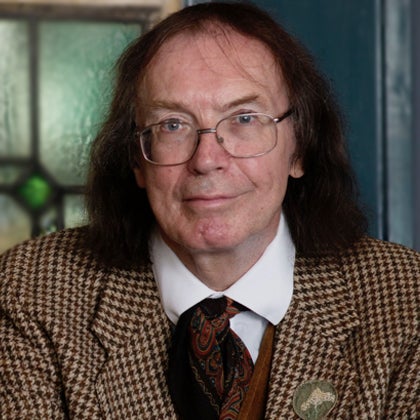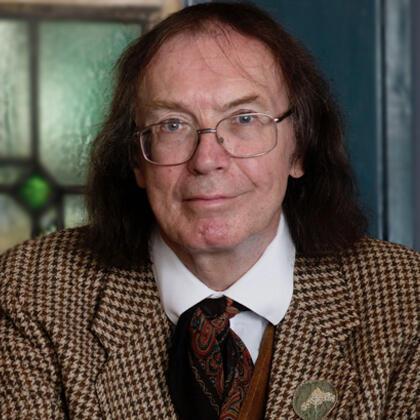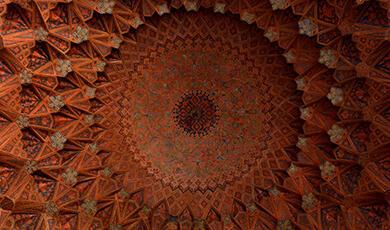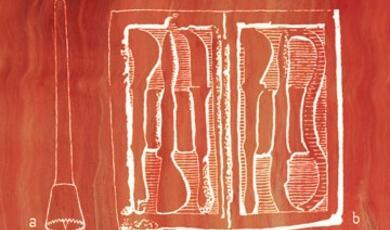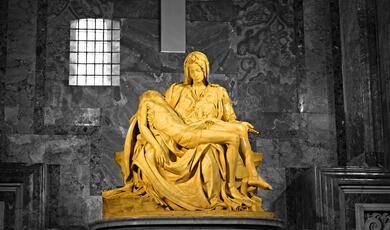Gods of Prehistoric Britain
Share
- Details
- Transcript
- Audio
- Downloads
- Extra Reading
Britain has one of the richest of all pagan heritages in Europe, defined as the textual and material evidence for its pre-Christian religions. The island is possessed of monuments, burial sites and a range of other remains not only from several distinct ages of prehistory, but also from three different major historic cultures.
This lecture will look at what we know of prehistoric worship, focusing on Stonehenge and the bog body known as Lindow Man, to examine the difficulties of interpreting evidence for ritual behaviour for which no textual testimony survives.
Download Transcript
The Gods of Prehistoric Britain
Professor Ronald Hutton
21st September 2022
What is Britain’s Pagan Heritage and Why Does It Matter?
These two questions are easily anwered at the opening. Britain’s pagan heritage consists of the material and textual evidence for the pre-Christian religions of this island. It matters because it is one of the richest and most complex in Europe. From the earlier Old Stone Age it has what may be Europe’s earliest ceremonial human burial, with ritual and grave goods, the so-called Red Lady of Paviland in South Wales, dating from around 34,000 years ago. From the later Old Stone Age it has the cave carvings at Creswell Crags in the North Midlands, only discovered in 2003. The Middle Stone Age has left evidence for ritual around settlements and camps, especially at Star Carr in Yorkshire which is one of the finest Mesolithic sites in Europe. From the earlier New Stone Age come the first megalithic monuments, the chambered tomb-shrines we call long barrows and dolmens, and from the later Neolithic and early Bronze Age, stone circles. The Iron Age supplied the huge monuments of banks and ditches traditionally called hillforts, which are now regarded as mostly places of gatherings held for various purposes, including religious observance. Then the Romans arrived, and gave faces and names to many native deities, in the form of statues, reliefs and inscriptions. They also brought with them their own goddesses and gods, not only from Rome itself but from all over its vast empire. When they pulled out, the Anglo-Saxons came in with their pagan pantheon, and soon after they were converted to Christianity, the Vikings arrived with theirs, one of the few on the continent which had not already been brought to Britain.
The significance of all this is that if you are an inhabitant of modern Greece, or Italy, or Iceland, or Finland, or much of Germany, or any of the Scandinavian or Baltic nations, or most of those of eastern Europe, then your pagan heritage consists of one pantheon of deities with associated physical monuments and literary references. In Britain, by contrast, we have no less than four different ancient religious systems from which to choose, from historic times alone, and before then, five different ages of prehistoric remains. This rich diversity is unsurpassed anywhere else in Europe or the Near East, and represents a wonderful resource for the creative imagination. It can provide an inspiration for art, music and literature of many kinds, and people today can define their own individual identities around or indeed against this heritage. They may do so whether their families have been in Britain for fourteen thousand years or for four years.
What most of the British evidence for prehistoric religion – and to a great extent even for historic ancient religions – has in common is that it defies confident interpretation, so that many different visions of its meaning are possible. To illustrate this statement, most of this lecture will focus on two case studies: of the most famous prehistoric monument in the world, Stonehenge, and of a human body, that commonly known as Lindow Man.
Stonehenge
We can say two things with certainty about Stonehenge: that it was put into what became substantially its final form in 2600-2400 BC, near the end of the Neolithic period, and that it is unique. No other monument is constructed with its iconic three-stone door-like settings, because no other was built by people who worked stone as if it were wood, smoothing and curving its megaliths and fitting them together with carpenters’ mortice and tenon joints. It is in fact a woodworkers’ wonder, and these were megalomaniac woodworkers. Not only did they attempt this one-off technique, which is very difficult in itself, but theirs was the only prehistoric monument in Western Europe constructed of large stones in which those stones were brought from more than ten miles away. The main megaliths were fetched from the Marlborough Downs, twenty to thirty miles to the north, and the smaller, the so-called bluestones from South Wales, and mostly the far western end, a couple of hundred miles of travel.
They were also careless or reckless carpenters. Everybody knows that Stonehenge is aligned on the midsummer sunrise, towards which an avenue, defined by a bank and ditch, runs out. Much more spectacular, however, was its orientation towards the midwinter sunset, which sent a beam of light between the uprights of the largest of the free-standing three-stone settings we call trilithons, that struck the upright Altar Stone in the centre. It was a stunning visual effect, surely central to whatever religion inspired it, but it is gone because the builders skimped on materials. What they needed were two long stone uprights, each embedded deep in the ground. Instead they got one of those, and put next to it a shorter one with a projecting lump at the end, beneath the topsoil. They secured this to its solid neighbour with a heavy lintel, but the result was unstable and at some point the shorter upright slipped, fell inward and broke, knocking over the Altar Stone, shedding the lintel and leaving the centre of Stonehenge strewn with huge slabs. It may even have happened before the monument was finished, and caused its abandonment; in which case Stonehenge would have been one of the greatest engineering disasters of the ancient world.
So what can be said of its purpose? Here the sensible approach was established by the first great scholar to write about it, the Elizabethan William Camden, who said that nobody really knew why it had been constructed,and then proceeded to lay out the current theories on offer. He has been imitated by most sober publications ever since, including the present English Heritage guidebook: only the theories change. This approach does however leave the way open for bolder writers to produce best-selling books purporting to solve the problem. The earliest and most successful of these was Geoffrey of Monmouth in the 1140s, who claimed it was built by the wizard Merlin as a war memorial. That was accepted by many for half a millennium, and when it ran out of credibility it was replaced by the father of field archaeology, William Stukeley in the 1740s. He proved that the monument was built by the pre-Roman British, and therefore attributed it to the priests whom ancient writers had described as serving those British, the Druids. This idea dominated the public imagination for two centuries, until it was generally understood that the Druids were around two and a half thousand years after Stonehenge was built, and so may have had nothing to do with it. Instead, in the 1960s an astronomer at Boston, Gerald Hawkins, decided that the structure was a computer, to predict eclipses and other celestial events.This was popular for two decades: it may be observed that the duration of these hypotheses is getting ever shorter.
In the 2000s English Heritage, the body which cares for Stonehenge, allowed two different teams of top archaeologists to study the monument simultaneously. One was the SPACES project, led by Geoffrey Wainwright and Timothy Darvill, which decided that it had been a healing shrine, a kind of Neolithic Lourdes. The other was the Stonehenge Riverside Project, led by Mike Parker Pearson and including almost every expert in the period who was not in the other team. This decided that Stonehenge had been a temple of the dead, attended by the living only infrequently and to honour their ancestors. That two such impressive bodies of experts could come up with utterly different conclusions simultaneously suggests that a definitive answer to the question of the stones’ purpose may never be achieved.
On default of one, commentators are left to indulge their imaginations, and prejudices, and those have traditionally taken two different forms, applied not just to Stonehenge but to all prehistory. One is associated with people who take an instinctually benevolent view of humanity and a dim one of modernity. These tend to think of prehistoric religion as characterised by creativity, harmony with the natural world, and inherent wisdom. By contrast, those with a pessimistic view of essential human nature, a dislike of religion (or of particular forms of it such as paganism or Roman Catholicism), and a faith in progress and modernity, have often instinctually associated prehistoric worship with gloom, gore, ignorance, savagery and oppression. In particular they have credited it with an addiction to human sacrifice. Both outlooks have been stronger at particular periods – the benevolent one was uppermost in the eighteenth century and the negative one in the nineteenth – but both have constantly been around for half a millennium. It is probable that they always will be.
This situation has some benefits. It means that people are genuinely free to imagine the original purpose of Stonehenge, and the beliefs that inspired it, according to their own inclinations, within the limits of the evidence. They need not fear contradiction, and are unable to contradict others who differ from them. In that sense it really is a people’s temple in the modern age, lacking controlling dogma and appropriated by no particular belief system. Combined with its international fame and unique form, that confers a very special and valuable status upon it.
Lindow Man
Our second case study is of a human being and not a monument, a dead body displayed in the British Museum and commonly known as Lindow Man. He consists of a head and torso, with arms and part of a leg, found in a peat bog south of Manchester called Lindow Moss, in 1984. He was arguably the most sensational find of British archaeology in the 1980s and became the most intensively studied human corpse until that time. On removal to London he was examined by a distinguished clinical pathologist, Ian West, who concluded that his skull had been fractured by a heavy blow, his neck broken by a strangling cord, which was still in place, and his jugular vein cut by a sharp instrument. By any standards this was overkill, and it was concluded that he had been the victim of a horrific, highly ritualised, immolation, which many people equated with human sacrifice. He was dated to the Iron Age, and exhibited in the gallery from that period at the museum, with a notice informing the public of his ceremonial triple death. This made it easy to equate the latter with the accusation levied by some ancient writers, within the Roman Empire, that the Druids, the Iron Age priests of Britain (and neighbouring parts of Europe) had specialised in such sacrifices. The equation was the more readily made in that other ancient bodies had been found in Continental European bogs, some of which had also suffered dramatic and lethal injuries and had likewise been attributed to a sacrifical pagan religion.
As such, he seemed to many to be a final proof that the Druids had indeed been leaders of such a religion. Experts on the Iron Age represented him as such, and he became an iconic figure in modern arguments against religious tolerance and multiculturalism. Fundamentalist Christian works of fiction, which had portrayed the Druids as murderous savages in order to extol early Christianity, were now republished with introductions holding up Lindow Man as proof of the truth of that portrait and as a warning against religious diversity in the present. The normally liberal Guardian newspaper ran an article on the museum which firmly blamed the Druids for his death and warned that those who observed apparently harmless modern Druid groups at their ceremonies were actually ‘only a heartbeat away from horror’.
Over time, however, this interpretation of the body began to be undermined by different factors. One was work by specialists in ancient Roman culture, which noted that the charge of human sacrifice was one which authors in the Roman Empire had regularly levied against groups whom they did not like. These included Jews and Christians, but nobody now believed the accusation in their cases because good evidence exsited for their actual practices, and they had left powerful modern lobbies to speak for them. By contrast, groups like Druids, of whom modernity knew much less and who had not left powerful and respected descendants, were regarded as being guilty as charged. There seemed to be a double standard in play here, and a possibility that the charge of human sacrifice against the Druids had been employed by the Romans as an excuse for conquering their peoples. The evidence of the Continental bog bodies was likewise inconclusive, as there was no solid proof that a single one of those had been killed in religious rites, as opposed to other contexts.
My own doubts were increased in 2003, when I obtained a copy of the British Museum’s original report on the body, and discovered two things. The first was that before Ian West had examined it, it had been inspected by another expert, Robert Conolly, who became Professor of Anatomy at Liverpool University. He had concluded that the man had been beaten to death, in a rain of blows that had broken his head, his neck and one rib. He thought that the strangling cord around the neck had been a necklace, as the neck muscles showed none of the trauma associated with strangulation and the apparent tightness of the cord was caused by the swelling of tissues in the bog. The cut across the neck, he believed, had been inflicted after death, perhaps by a peat-cutter’s spade. Conolly therefore rejected the diagnosis of a ritualised triple killing.
There was also an issue of dating. The original one, which assigned the body firmly to the Iron Age, turned out to have been contaminated by that of the surrounding bog. A better investigation was then carried out by two different laboratories, both using the radiocarbon method. One suggested a post-Roman date, while the other settled on a span of time between the late Iron Age and the late Romano-British period. The latter institution was asked for a final try, and concluded that there was a 30% chance that the man had died in the late Roman or post-Roman period, and a 70% one that he came from Roman Britain or the end of the pre-Roman Iron Age. For the museum, this was enough to confirm an Iron Age date, and the position of the display in that gallery. It remained there although a second body was found in Lindow Moss in 1987 and firmly dated to the Roman or post-Roman period, while a human head had already been found there with the same dating, and another had been found in a different bog near Manchester and yielded the same result.
In 2004 I decided to start a debate over these issues, and laid out the evidence in the Times Literary Supplement. I suggested that an open verdict be returned on the body: that it could be a victim of human sacrifice, judicial execution or murder, and be Iron Age, Romano-British or post-Roman. I was answered by the curator of the gallery, a respected expert in the Iron Age, J. D. Hill, who cited the authority of Ian West to confirm a ritual killing. He agreed that the body could be Romano-British, but suggested that this only indicated that human sacrifice could have persisted clandestinely under Roman rule. I argued that experts had disagreed over the cause of death, and that there was no firm evidence of human sacrifice in the British Iron Age to persist into the next period. Dr Hill then conceded in The Times that we might never know how the man died, but the exhibit remained unchanged.
The change came in 2008, when the body was loaned to Manchester Museum for a temporary exhibition. The staff there chose to display it with a range of possibilities left open for the cause of death, a position now endorsed in the commentaries offered, among others, by J. D. Hill. A conference accompanied the event, to which I was invited to give the keynote address, and almost all of the following speakers endorsed my approach, of advocating multiple possibilities, including Jody Joy, Dr Hill’s successor as curator of the relevant gallery at the British Museum. He subsrquently published a booklet for sale at the museum setting forth this position; and, when the body was returned, this was reflected in new labelling.
I tell this story for two reasons. First, because it is an example of how scholars can debate and revise orthodoxies in a civilised and collective manner. Second, because it is one of how even aspects of ancient British religion that had been generally accepted as clear and proven, by dramatic pieces of evidence, can crumble into uncertainty under further scrutiny.
The Pleasures and Perils of Pluralism
At this point my conclusion must seem clear: that I am advocating a multiplicity of possible interpretations of most of the data for prehistoric British religious belief and practice. In this respect even more than others, we should have not the ‘story’ of Britain to tell, but the ‘stories’. It is a scenario that befits a new multiethnic, multicultural, multifaith society based on individual choice and potential. It is one that still accords experts considerable value. Heritage managers and museum curators retain a vital role in protecting and displaying ancient monuments and the finds from them, laying out the evidence for their nature, and then leavng the public to make informed choices regarding what may have happened there. Professional historians and archaeologists will remain the national authorities on discovering and identifying evidence, explaining what sites may have been, and reading and translating texts.
Where prehistoric religion is concerned, they then need to stand back to let the public dream their own dreams, make their own uses of the evidence, and tell their own stories. Educational institutions have moved in the past half a century towards the concept of student-centred learning. We need to make a similar move towards public-centred appreciation of heritage. This would, as suggested, fit the mood of the times and the kind of society which is now developing in Britain. I hope that I have made it seem logical, natural and simple.
In reality it is not an easy process, if indeed it is achievable at all, because it runs counter to many powerful and persisting traditions in national culture. One is that professional experts are paid to get results and supply confident answers, not to provide material and then invite others to do the work. Academics and heritage managers still have for many the role of ancient bards, of telling the communal story. My scenario will also sit badly with those who believe firmly in progress, the duty of each generation to discover and know more than the last. It is certainly true that knowledge does increase steadily in science and technology, with very valuable results for humanity, and to people accustomed to use these fields as exemplars, it is jarring to be told that with respect to prehistoric religion we know no more than we did a hundred years ago.
In addition there are large numbers of people in our nation who do not regard the appearance of a diverse society of many ethnicities, faiths and cultures as a comfortable development. Even many of those who do believe that such a society needs to be bonded by a single national story, and therefore identity, clearly and confidently delivered by respected scholars. Pluralism of interepretation can look like a removal of the last links that hold a nation together. Finally, historical and archaeological scholarship is most glamorous when it fits the model of a quest romance: of starting with a problem that has baffled experts for decades, at least, and then showing how a breakthrough has now been achieved to solving it. That is a format almost guaranteed to win a commission for a television documentary or a slot on the national news. By contrast, editors are unlikely to be interested in a proposal for a programme that sums up the evidence and invites viewers to interpret it themselves.
Anybody advocating my position, therefore, is likely to be faced with uphill work of cliff-like proportions, and yet I hold to it. I believe that is it well fitted to the sort of society that we are becoming, but I believe even more that it is intellectually honest, corresponding to what the evidence can tell us and what we can actually know. Scientific developments enable experts to become more and more proficient in knowing about the health, diet, ethnicity, technology and living habits of prehistoric people. What we still cannot do is get inside their minds. As a result everything in prehistoric Britain with regard to the nature of political and social structures, gender relations and – above all – religion, remains completely unknown.
However, in making this case, I would be guilty of betraying my own principles if I did not recognise that you who are listening may not agree with it, and are free to do so. If there are as many reactions to this lecture as there are people in its audience, then it will have achieved its objective.
© Professor Hutton 2022
References and Further Reading
Hutton, Ronald. Pagan Britain. 2013
Darvill, Timoithy. Prehistoric Britain. 2010
Pollard, Joshua. Prehistoric Britain. 2008
Hill, Rosemary. Stonehenge. 2008
References and Further Reading
Hutton, Ronald. Pagan Britain. 2013
Darvill, Timoithy. Prehistoric Britain. 2010
Pollard, Joshua. Prehistoric Britain. 2008
Hill, Rosemary. Stonehenge. 2008
Part of:
This event was on Wed, 21 Sep 2022
Support Gresham
Gresham College has offered an outstanding education to the public free of charge for over 400 years. Today, Gresham plays an important role in fostering a love of learning and a greater understanding of ourselves and the world around us. Your donation will help to widen our reach and to broaden our audience, allowing more people to benefit from a high-quality education from some of the brightest minds.


 Login
Login
